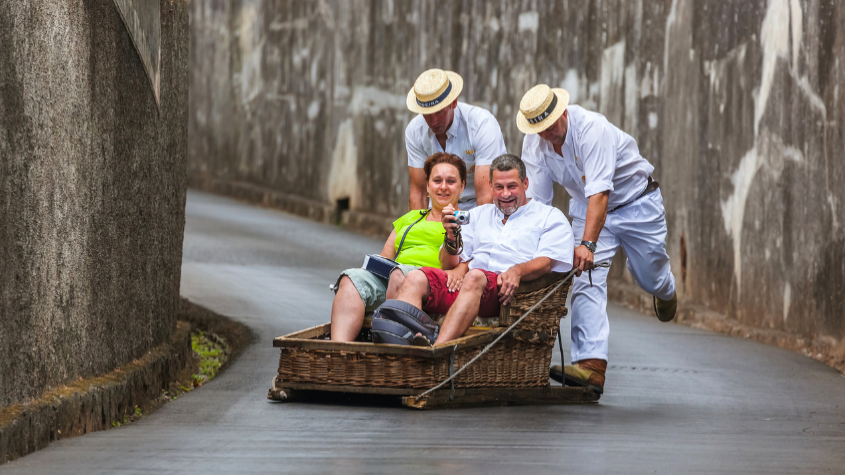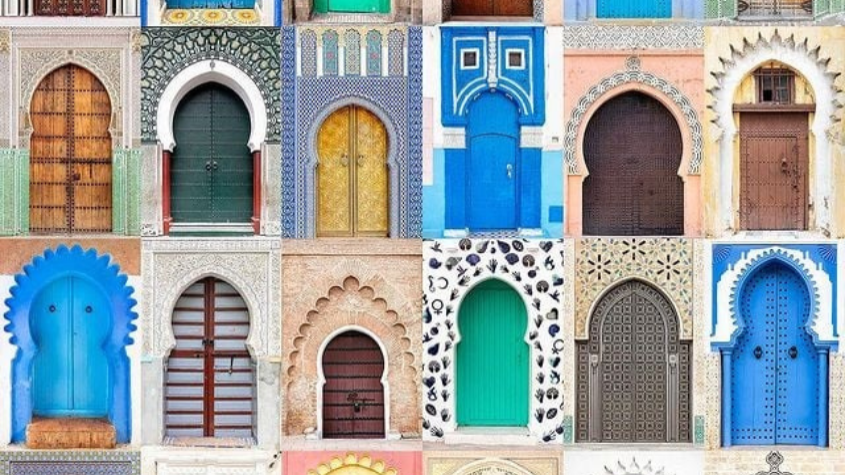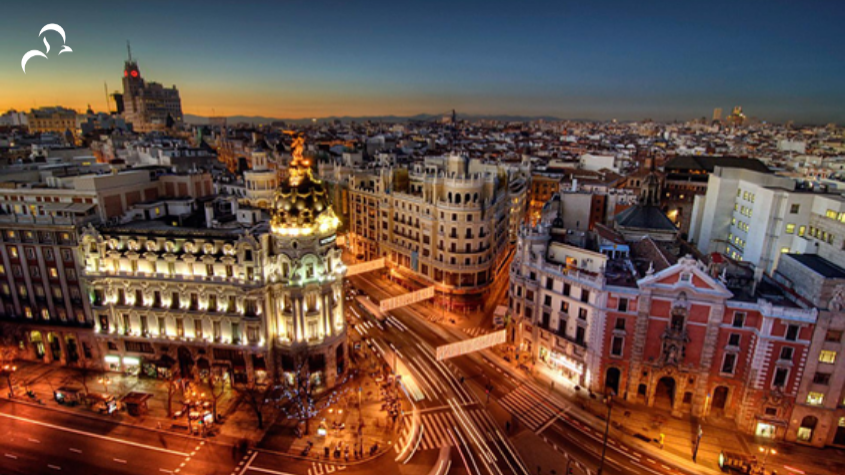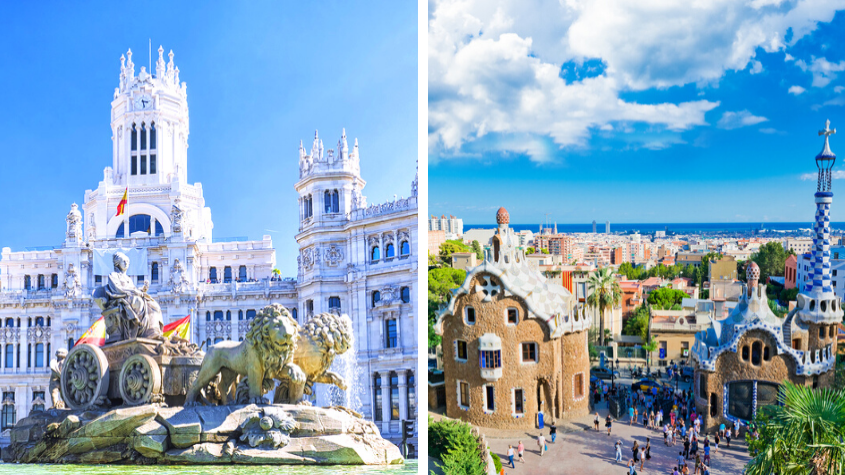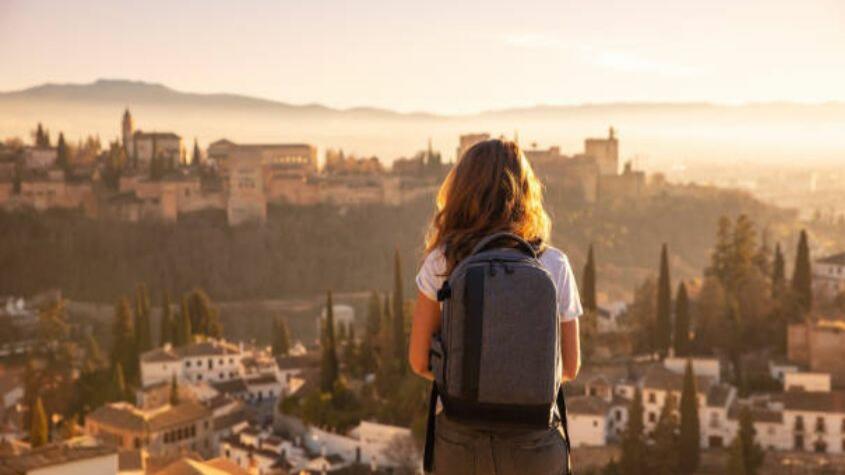
Best Places to Visit in Spain
In Spain you can visit many places and spaces that are unforgettable! Let's get to know the must-see places in Spain through a tour of the various regions! Galicia, Picos de Europa, Catalonia, Valencia, Madrid and Andalusia are some of them. Let's get to know some special places and learn a little more about their history!
The Cathedral of Santiago de Compostela
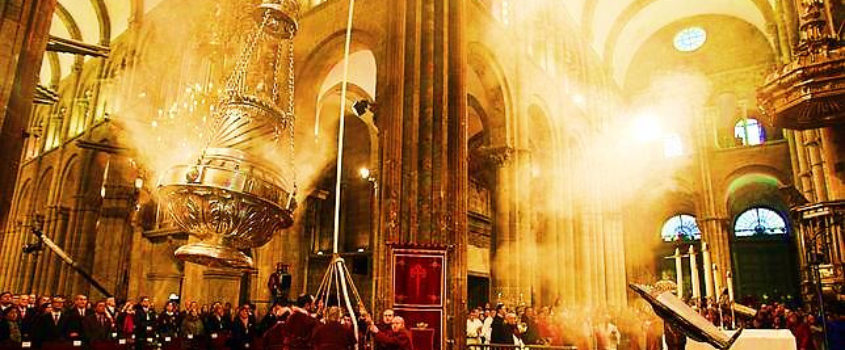
Santiago de Compostela Cathedral is one of the oldest in Spain because it was built at the end of the 11th century in Romanesque style and is currently the Cathedral of the Archdiocese of Santiago de Compostela. This cathedral houses the tomb of the apostle with the same name and Holy Protector of Spain, which has made it the main destination for Spanish Christian pilgrimage, having been included on the UNESCO World Heritage List in 1985. But its greatest attraction is the "bota fumeiro", a censer weighing 50 kilos, which starts from the cathedral's central nave and rises 20 metres above the heads of visitors at a speed of 70 km/h, driven by a system of pulleys operated by a group of 8 men. Its function was to reduce the bad smell caused by pilgrims during the Middle Ages. You can see this censer in activity all year round but on specific days: 06/01, 23/05, 25/07, 15/08, 01/11, 30/11, 8/12 and 25/12.
Picos de Europa in Asturias and Cantabria
.png)
The Picos de Europa National Park, between the provinces of Asturias, Cantabria and Leon, is the perfect example of an ecosystem that is home to two of the most emblematic animals: the brown bear and the Iberian wolf. But there is much more not to be missed! A visit to the Naranjo de Bulnes, the Potes and the Cares Route is not to be missed! This park has free guided tours between July and September in the 3 provinces that encompass the park! You must also try the local gastronomy like the famous blue cheeses, the Asturian broad beans, the famous pitu de caleya, among others.
The Sagrada Familia and Casa Batló by Gaudí in Barcelona
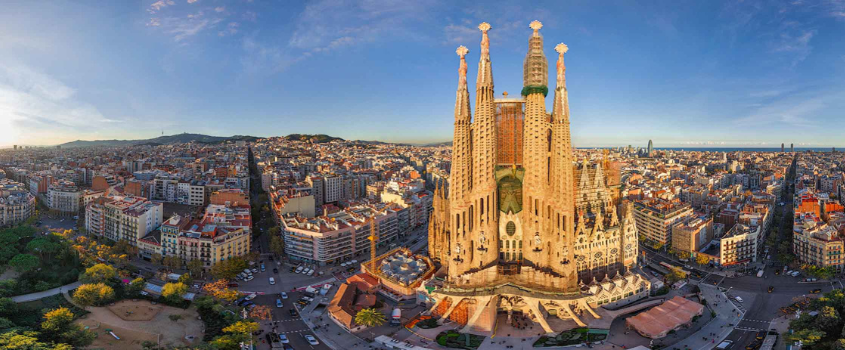
The Sagrada Familia Cathedral is a work of the architect Antoní Gaudí begun in 1882 and taken over by him the following year when he was only 31 years old. Gaudí designed 3 large façades: the Nativity, the Passion and the Glory. Only the first façade is finished, but the design of the temple when finished will have 18 towers: 4 at each of the 3 entrances to the façades plus 6 towers (a 170m high central one dedicated to Jesus Christ and another dedicated to the Virgin plus 4 around these). Construction was suspended during the Spanish Civil War in 1936 and is estimated to be completed in 2026.
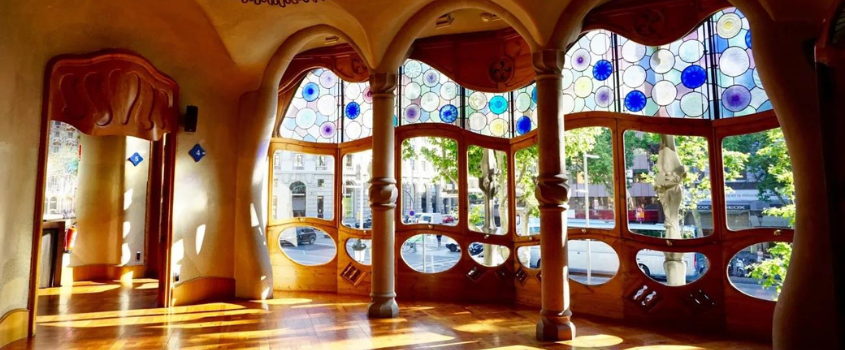
Gaudí also designed a very special house in Barcelona, Casa Batló which appears to be made of "skulls and bones", where the skulls are the balconies and the bones are the supporting pillars. Casa Batló was designed for the aristocrat Josep Batló and Gaudí made sure to pay attention to every detail in its construction. Enjoy a visit to the house which is a UNESCO Heritage Site, as it is only open to the public from 1 July 2021!
The City of Arts and Sciences in Valencia
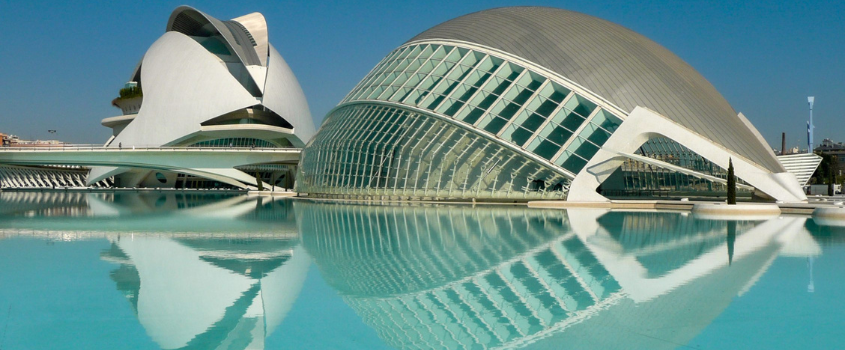
The City of Arts and Sciences is a small futuristic city within the millennial city of Valencia and was created by the architect Santiago Calatrava. This city is a set of buildings along almost 2 km within the city of Valencia, dedicated to scientific and cultural dissemination. This city includes the Palacio de las Artes Reina Sofía, an iMax cinema, the Museo de la Ciencia Príncipe Felipe, a landscaped area with the Umbracle, the Agora and even an Oceanarium. In the image you can see "The Eye", a work that houses the planetarium and the cinema of this city and that resembles a human eye with eyelids where the reflection of the water completes the rest of the eye's design.
The Nasrid Palaces of Alhambra
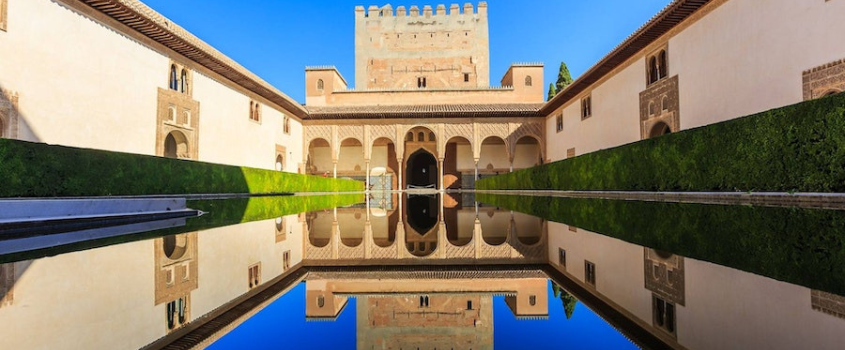
Alhambra, located on La Sabika hill, has existed since Roman times and the small fortress there was built on that site in the 9th century. When the Iberian Peninsula was occupied by the Arabs in the 13th century, the emir Al-Ahamar had the castle rebuilt and the Nasir Kings then built the 3 palaces! In the 15th century, with the Christian Reconquest, the Royal Court occupied the buildings and remodelled them in the Renaissance style.
The Alhambra castle includes 3 highlights to visit: the Nasrid Palaces, the Alcazaba which was the military zone and the Generalife which was the Sultan's summer house! The Nasrid palaces are often explored by tourists because they are different from all the other Royal Palaces in Europe! The Nasrid Palaces have 3 sections: the Mexa, which is semi-public part where justice and state affairs were administered; the Comares, official residence of the kings; and the Lions, private area that housed the Sultan's harem!
The Caminito del Rey Trail
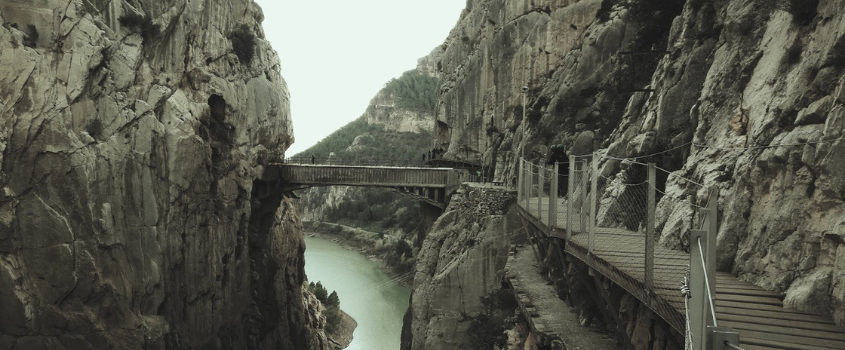
The Caminito del Rey Trail was built between 1903 and 1905 so that the builders of the El Chorro dam could gain access to the construction site. The name became known as the King's Path because in 1921, when King Alfonso XIII went to inaugurate the Guadalhorce dam, he walked this trail to reach the inauguration site. In the 1990s, more adventurous people showed that this trail was a place to explore, to visit, making it known to the whole world. After some accidents at the site, caused by lack of maintenance, it was closed for 15 years and was reopened to the public in 2016, in safe conditions! Venture out from Malaga or from Seville.
The village of Ronda in Andalusia
.png)
The village of Ronda is a village located near Malaga in Andalusia. Some of its attractions are the Plaza de Toros, the Mondragón Palace, the Duquesa and Socorro Square, the Bandido Museum, the Porte de Almocabar, the Arab walls and the Arab baths. You can also visit the Andalusian winery and the ruins of Acinipo, but its main attraction is the New Bridge, which is shown in the picture! This bridge took 42 years to build! It crosses the valley and connects the old and new town previously separated by El Tajo valley and the Guadalevin river and is almost 100 metres high! Don't miss this visit!
The Cuevas de Flamenco
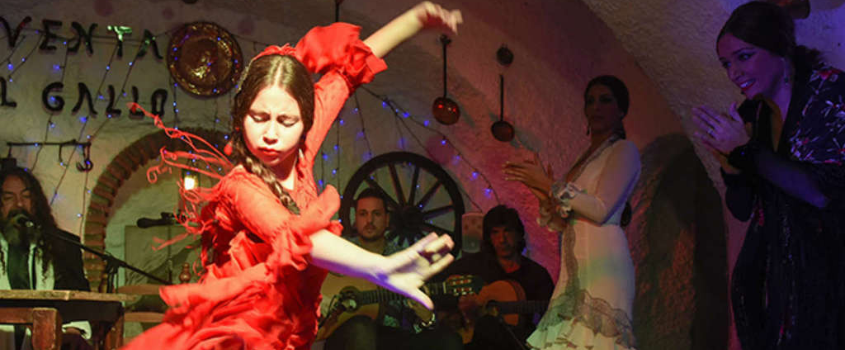
The music, dance, singing, poetry and feeling put into Flamenco Art make this popular Spanish genre from Andalusia, the best known in the world! That is why it has been declared Intangible Cultural Heritage by UNESCO. Also known as "cante jondo", it was initially enjoyed in small family gatherings, but as it gained popularity, it began to be performed in cafés, restaurants, theatres and coffee shops with small stages. But, these opened doors to the current stages! Don't miss the shows at the Tablao Cuna del Flamenco, at El Palacio Andaluz, at the Baraka Sala Flamenca or at the Cuevas de los Tarantos!
The Prado Museum in Madrid
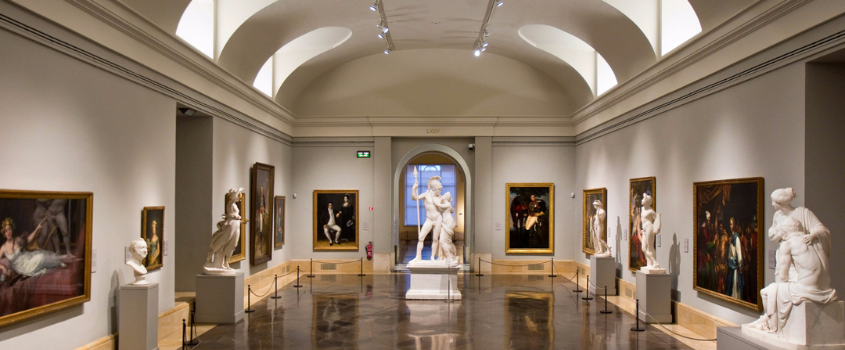
This museum is the most important in Spain and one of the most visited in the world. Works by Goya, Velázquez, El Greco, Bosch, Durer, Tintoretto, Botticelli, Rembrandt, Brueghel, Rubens and many others form part of its collection. In this museum, interesting exhibition solutions have been found because Goya's more than 4,000 drawings are displayed in two rooms where they are rotated for security reasons. You can also see here Velázquez's The Girls and Goya's The Shootings of 3 May and the great masterpieces of the Spanish, Italian and Flemish schools. The Prado Museum has a valuable collection of 8600 paintings and over 700 sculptures and is included in one of the most most visited artistic itineraries in the capital.
The Aqueduct of Segovia
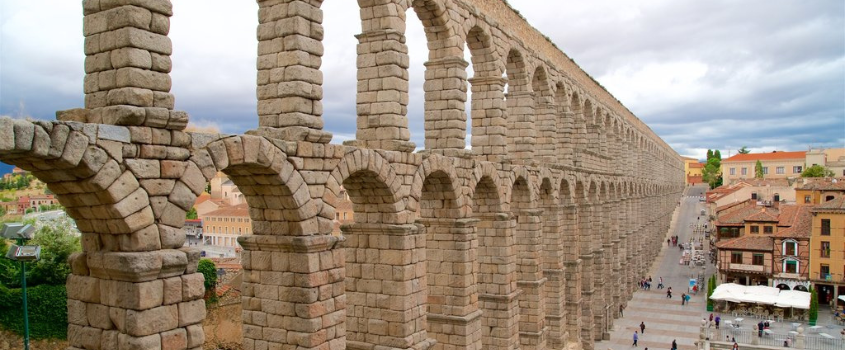
This aqueduct is one of the oldest and best preserved in the whole Iberian Peninsula! This is why it was declared a World Heritage Site by UNESCO in 1985. The city of Segovia, located 95 km from Madrid, was one of the most important in Spain in Roman times and it would function until the 19th century. During the Arab invasion in the 11th century, the aqueduct was almost completely destroyed until it was recovered by the Christians in the 15th century, which allowed Segovia to become the residence of the king of Castile. This aqueduct is 750 metres long and has more than 150 stone arches and you can climb to the top of it to see the mountains and the city.
As you can see there are several must-see places to visit when you go to Spain! And some of them are so special that you will definitely want to go back! Enjoy a trip to some of these cities in Spain to get to know their Material and Immaterial Heritage! To learn more about our offers, visit the Living Magazine-Blog and our Living Tours website where you can always take a peek at all the articles and trips about about the top places to visit in Spain or Portugal!
Did you like it?
Average votes: 4.44 of 5
Go Back to the Blog







